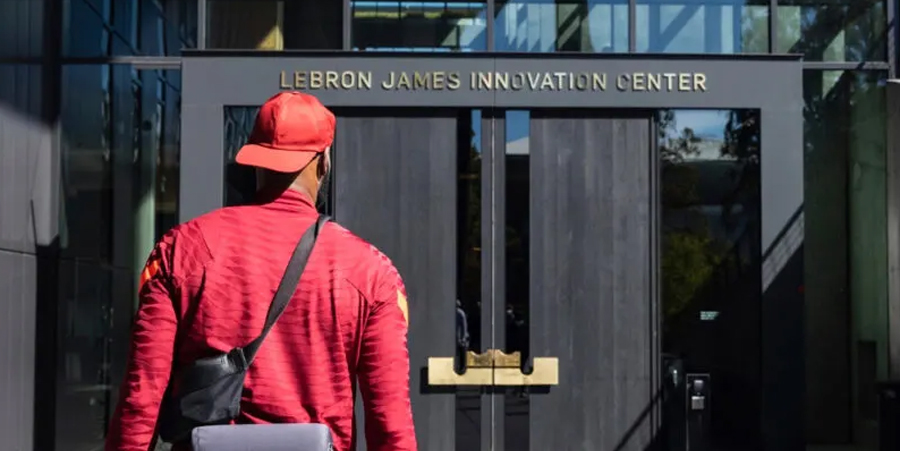The Nike Sport Research Lab has a new home in the house of King James. Take a look inside where Nike turns athlete data into products.
On a crisp, early autumn day, I approached the new LeBron James Innovation Center at Nike’s headquarters in Beaverton, Oregon. Soon enough, I’d be sweating.
Four and a half years in the making, the 750,000-square-foot center marks the first time that Nike has ever combined apparel, shoe design, and athlete analysis all under one roof. That means designers work in the same building as biomechanics researchers; Nike shoes and shirts are developed in the same place where Nike tests athletes to understand the intricacies of human movement and performance. That testing takes place on the building’s fourth floor—a wild, tech-filled gymnasium known as the Nike Sport Research Lab. It’s a place built not only for testing elite athletes like James: Nike plans for 85% of those tested to be everyday people who can help the company better understand how every body moves. (You can actually apply to be a subject here.)

Nike first signed James back in 2003, before he was even drafted, and re-upped the contract in 2010. An extension in 2015 was a lifetime deal—believed to be the first that Nike had ever signed—valued at a reported $1 billion. As of 2015, revenue from James’ shoe line had topped $350 million.
As for James’ namesake new building, that was designed by the celebrated architect Tom Kundig, who is known for his lofty steel, glass, and concrete buildings, grounded in rugged materials—like timber and metals—which are meant to age gracefully over time. (In this case, Kundig repurposed over 21,000 pounds of ground up Nike shoes—aka Nike Grind—to source the building’s carpets.)
I spent a day at the secretive LeBron James Innovation Center last month, allowed in before most of Nike’s own employees. Upstairs at the Lab, I’d had my body scanned from head to toe, and I did everything from jogging to kicking soccer balls at digital targets to get a portrait of my performance. And I can confirm that Nike’s scientists know what they’re talking about: In a two-minute test, they spotted the exact weaknesses that have me in physical therapy!
“We say, In this place, the price of admission is data,” says Matt Nurse, VP of the Nike Explore Team Sport Research Lab. What do you get in return? A better understanding of your own body, and hopefully, a fleet of Nike products that are better for everyone.
Here are the eight most amazing sights inside the center.
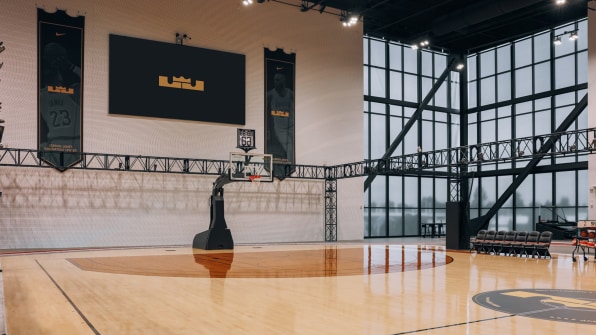
A LAB THAT DOESN’T FEEL LIKE A LAB
Let’s start from the top. The Nike Sport Research Lab (NSRL) is the world’s most advanced human performance lab, according to Nike. It’s five times larger than Nike’s former NSRL, which is especially impressive, because this lab is one giant room. When COVID restrictions end, Nike plans to test thousands of athletes here each year.
This 85,000-square-foot space houses a full-size basketball court, a 100-meter sprinting track (with one lane for concrete, to simulate city running), a 200-meter running track, and a soccer pitch. (The pitch features a large screen, which can move a target for you to kick at, measuring accuracy.)

Every sport you play is completely trackable. There are 400 motion-capture cameras surrounding this room, and 97 force plates are hidden in the court, track, and pitch to precisely measure how hard you step or cut. But the idea is that you never feel like you’re in a lab. The top-floor space is filled with windows, and no one is wearing lab coats.
“We wanted the place to inspire you to move,” says Nurse. “If you walk in, and it’s lab coats, and you feel like you’re going to get researched, that’s a bummer. It doesn’t feel welcoming; you feel like you’re going to be poked and prodded. It’s still science, and we still have to be objective—but we talk about athletes, and we do take the time to actually reach out and check their experience. We quantify and judge ourselves on the experience of how athletes come through because without them sharing their data with us, and trusting us, and going on that journey with us, it’s really hard for us to do what we do.”
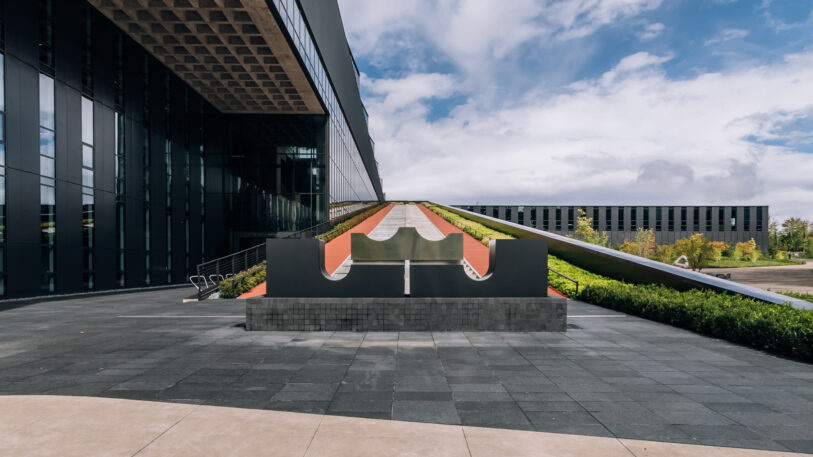
THE WORLD’S FANCIEST WAFFLE HOUSE
Rumor has it that employees inside Nike started referring to the LeBron James Innovation Center as the “Waffle House” before Nike discouraged that. But take a look at the building, and it’s easy to see why. As you approach, you can see that the massive concrete overhang is patterned just like a waffle.
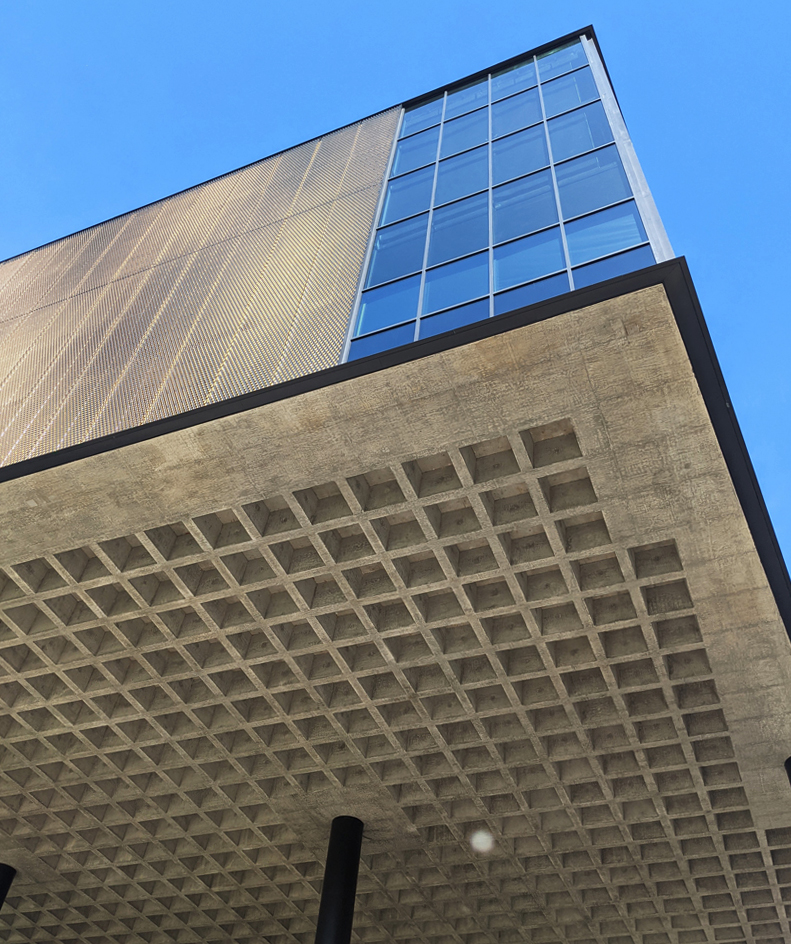
But there’s an important function to this form. That’s the subfloor of the aforementioned research lab. According to Nike, most of the world’s performance labs are in the ground level or basement because sensitive pressure sensors can err when influenced by the dynamic movements of a building. Kundig’s team solved that by building a subfloor with this specific waffle geometry (an air gap and another floor sit on top of it).
The waffled concrete has one more layer of symbolic significance. Nike cofounder Bill Bowerman built the first pair of Nikes by pressing rubber in a waffle iron, and the company still sells Waffle shoes today. Nike calls the waffle pattern on the building an act of “serendipity.”

A RAMP ALL THE WAY TO THE ROOF
On the building’s right side, you’ll see what looks like a giant staircase all the way to the top. But look closer, and you’ll see those aren’t stairs. It’s a four-story ramp that you can run all the way to the building’s rooftop.
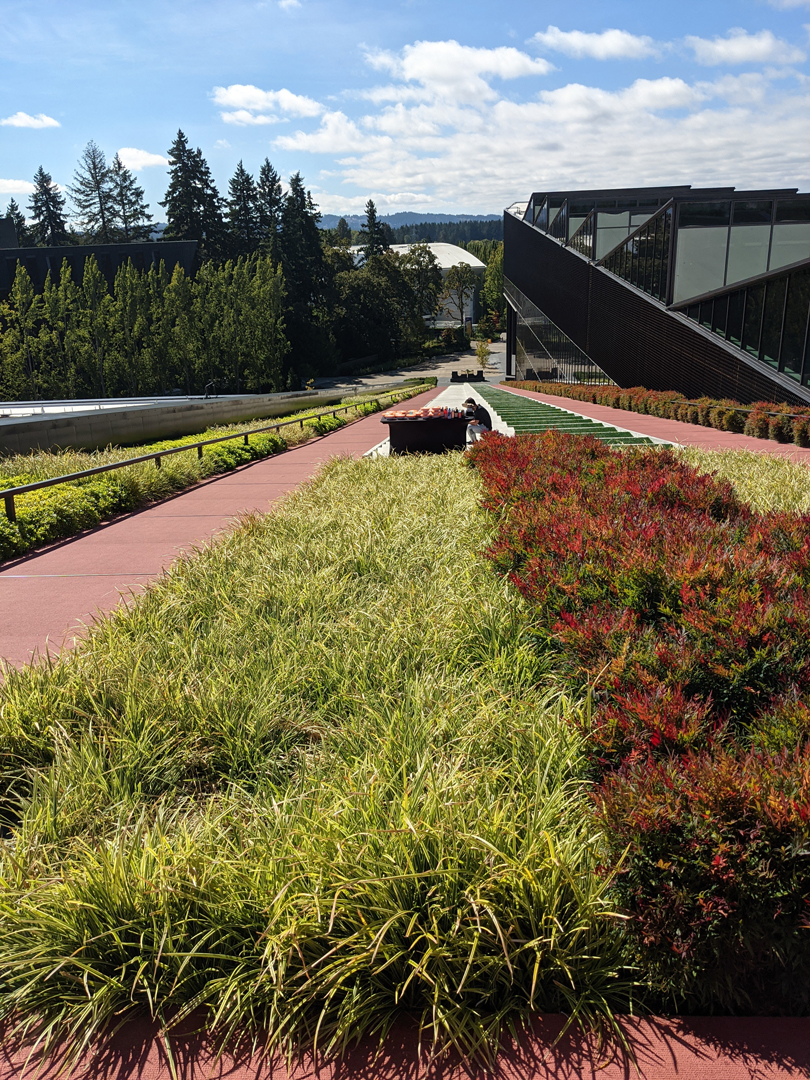
Extending more than 500 feet, its 15.63% incline is built to allow athletes to train for hilly terrain on a campus with no natural hills. I ran out of time to take it on myself, but the plant-covered summit is a pleasant place to have lunch, even when you’re not training.https://www.fastcompany.com/embed/N8OQKcva?playerID=G2hQKLvX

LEBRON’S FIRST 30,000 POINTS
The first site you’re greeted with in the building’s atrium is a basketball hoop. But it’s not actually just a basketball hoop. It’s a large-scale data visualization.
Look to the floor, and you’ll see circles—in black and gold foil. Lots and lots of circles. They represent every single shot made (gold) and missed (black) by James on his way to reach 30,000 career points in 2018. There’s so much gold under the rim, it looks like a leprechaun exploded.

This is but one of many large-scale data visualizations and art installations within the building. Other highlights include a mural of Nike cofounder Bill Bowerman, rendered in shoe laces, and a stark wall of numbers that are actually some of Nike’s most important patents. My favorite Easter egg was when I looked down a random hall and saw the word “Swoosh” suddenly come into focus. Pieces of each letter were painted through the space, but when lined up just right, you get an extra taste of Nike.

RACE AGAINST ELIUD KIPCHOGE
In 2019, Kenyan runner Eliud Kipchoge did something never before done in human history: He ran a marathon in under two hours. As a Nike-sponsored athlete, he was wearing a specially designed Nike Vaporfly shoe for the task.
Inside the lab, you’ll see a ring of two different LED “rabbit” lights that constantly circle their way around the circumference of the 200-meter track. One LED is relatively slow. It’s pacing an 11-minute mile, the speed of an average runner. The other LED races by at a 4:35-mile pace. That’s the same pace Kipchoge ran for his entire 26-mile marathon.
After tempting me for the better part of the day, I donned a pair of Vaporflys and broke out into a sprint to chase down Kipchoge’s time. I kept up with his pace for all of a single 200-meter lap.
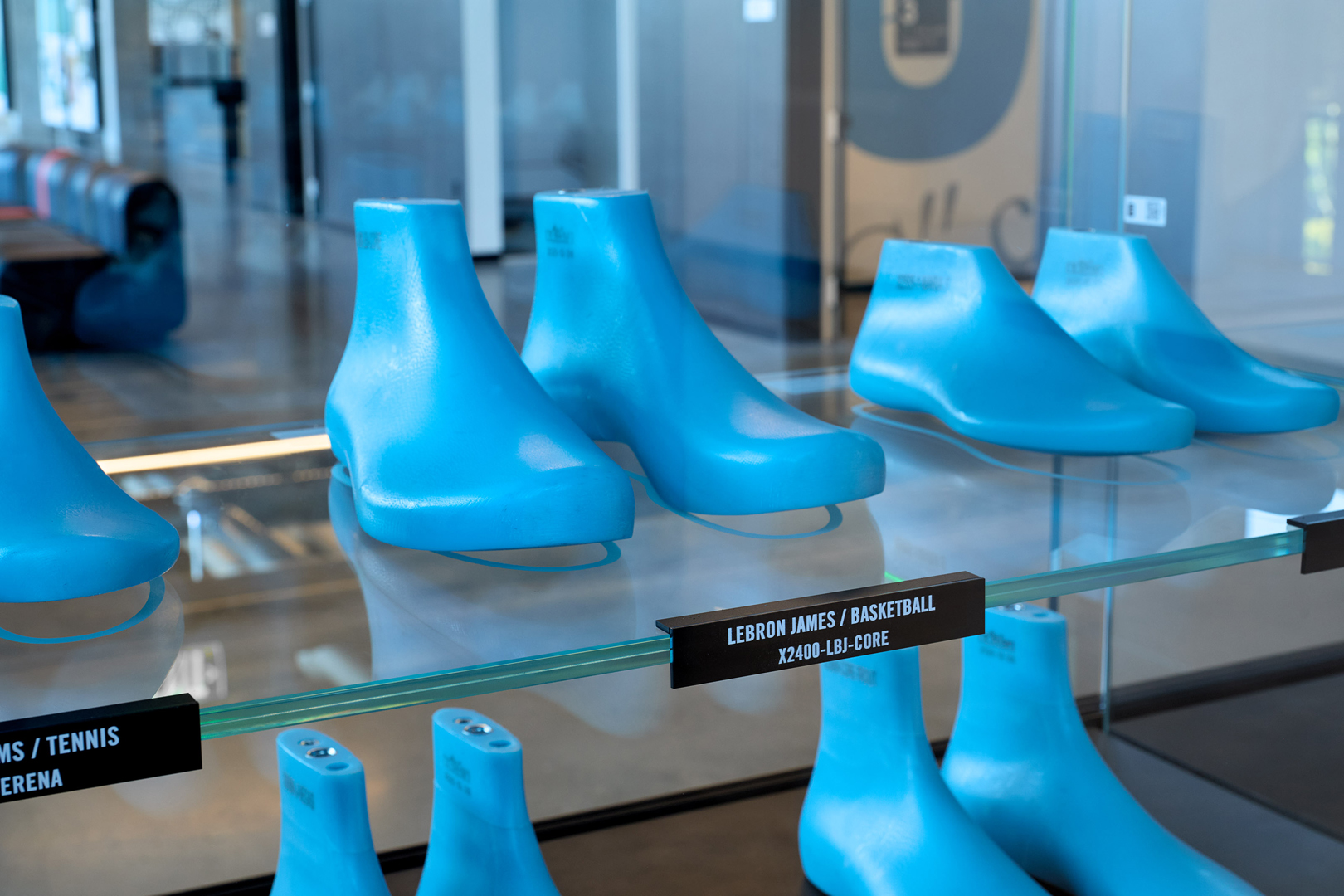
ALL OF THE FEET
There was one floor at the center that we weren’t allowed to photograph, and that was floor three. Half of it is dedicated to footwear design; the other half is dedicated to apparel design. It’s filled with sewing machines, craft tables, 3D printers, and industrial knitting machines. It’s Willy Wonka’s chocolate factory, albeit with yarns, foams, and air bubbles.
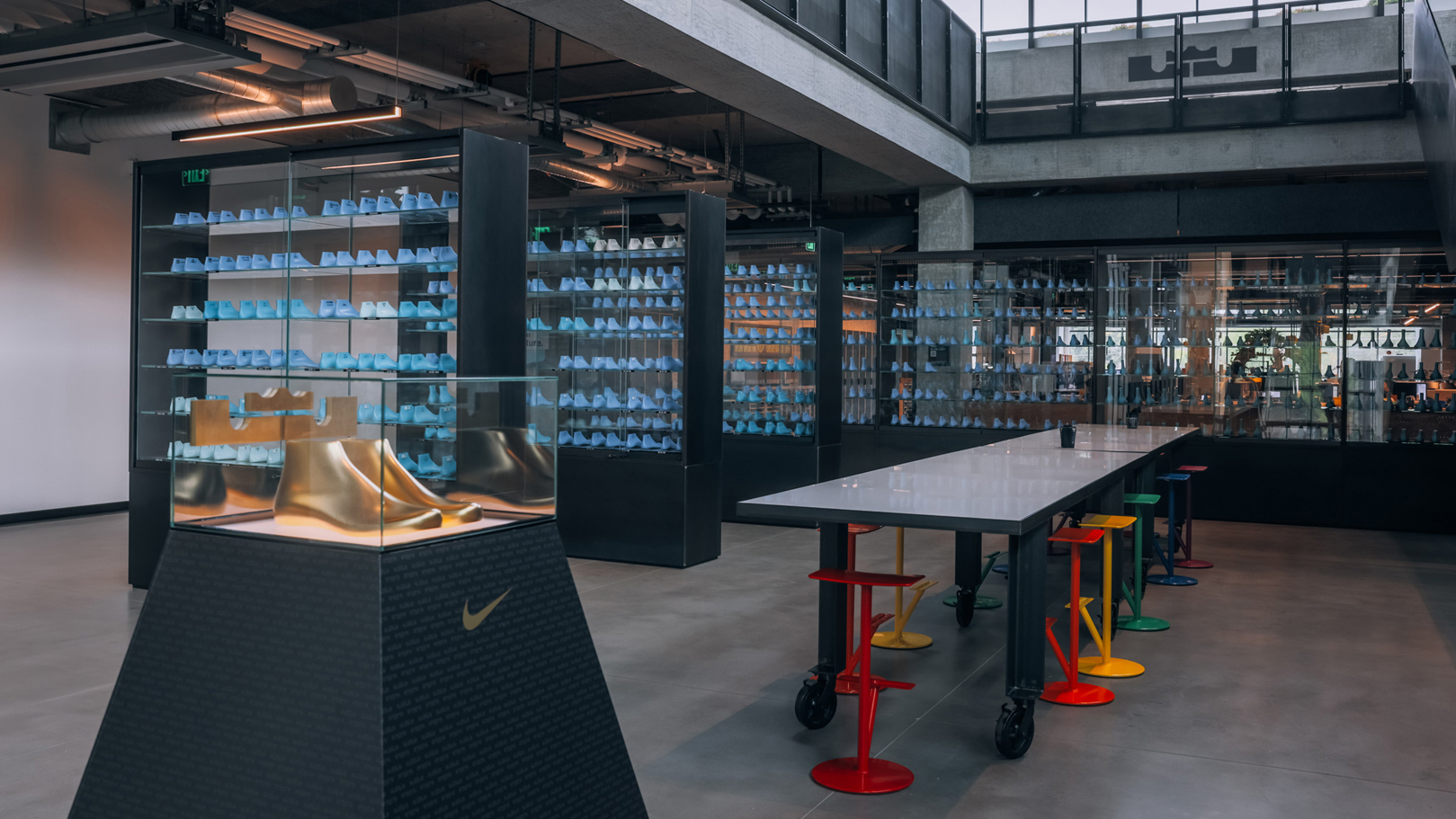
Some of the most protected IP on this floor comes in the form of about 700 pairs of blue feet. These are Nike’s carefully protected lasts (the foot forms on which you craft a shoe). I’m told the feet of several elite athletes are in these display cases. The only one I notice, however, are those of James. His size 15s sit front and center, rendered in gold instead of blue.
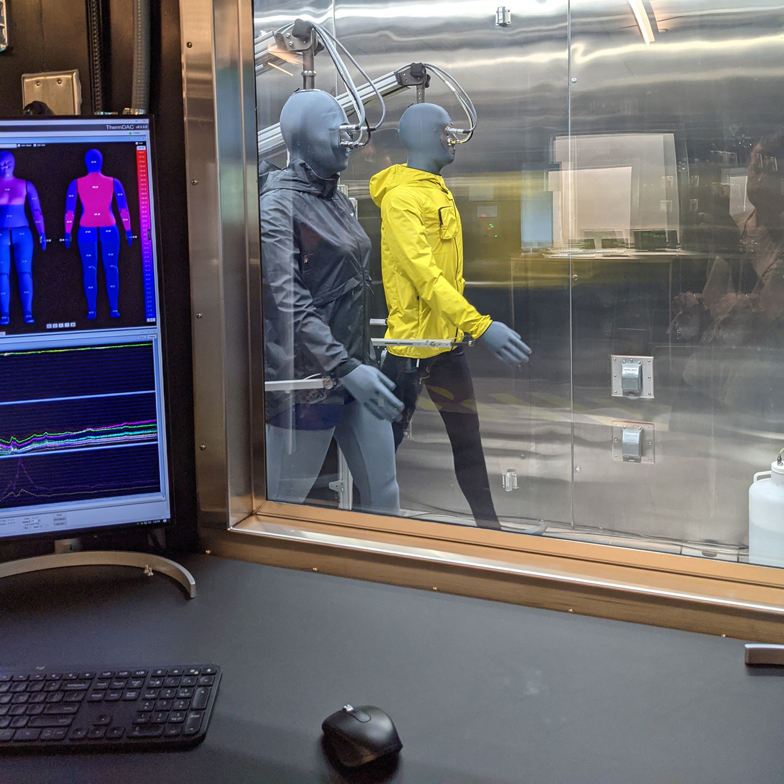
SWEATING MANNEQUINS
Walking through the lab, you’ll spot a series of heavy metal doors with tiny glass windows. It looks like some Hollywood jail for supervillains. In reality, these are the lab’s environmental chambers. They’re climate-controlled rooms with steel clad walls, capable of studying physiological response to exercise under any environmental conditions including temperature, humidity, radiant heat, and airflow.
When I open one door, I’m greeted by 93 degree heat, 80% humidity, and oppressive faux sunlight beaming down from lights above. It feels terrible. Just standing there, it’s hard to breathe. These were the exact conditions athletes encountered during the Tokyo 2020 Olympics.
The idea is that Nike can study how garments of different designs and materials can perform in various conditions. But who wears these garments? While Nike does test with actual athletes (some partners are even invited to use these rooms in which to train), most testing is done on moving, grey-skinned mannequins, which have pores that actually sweat.
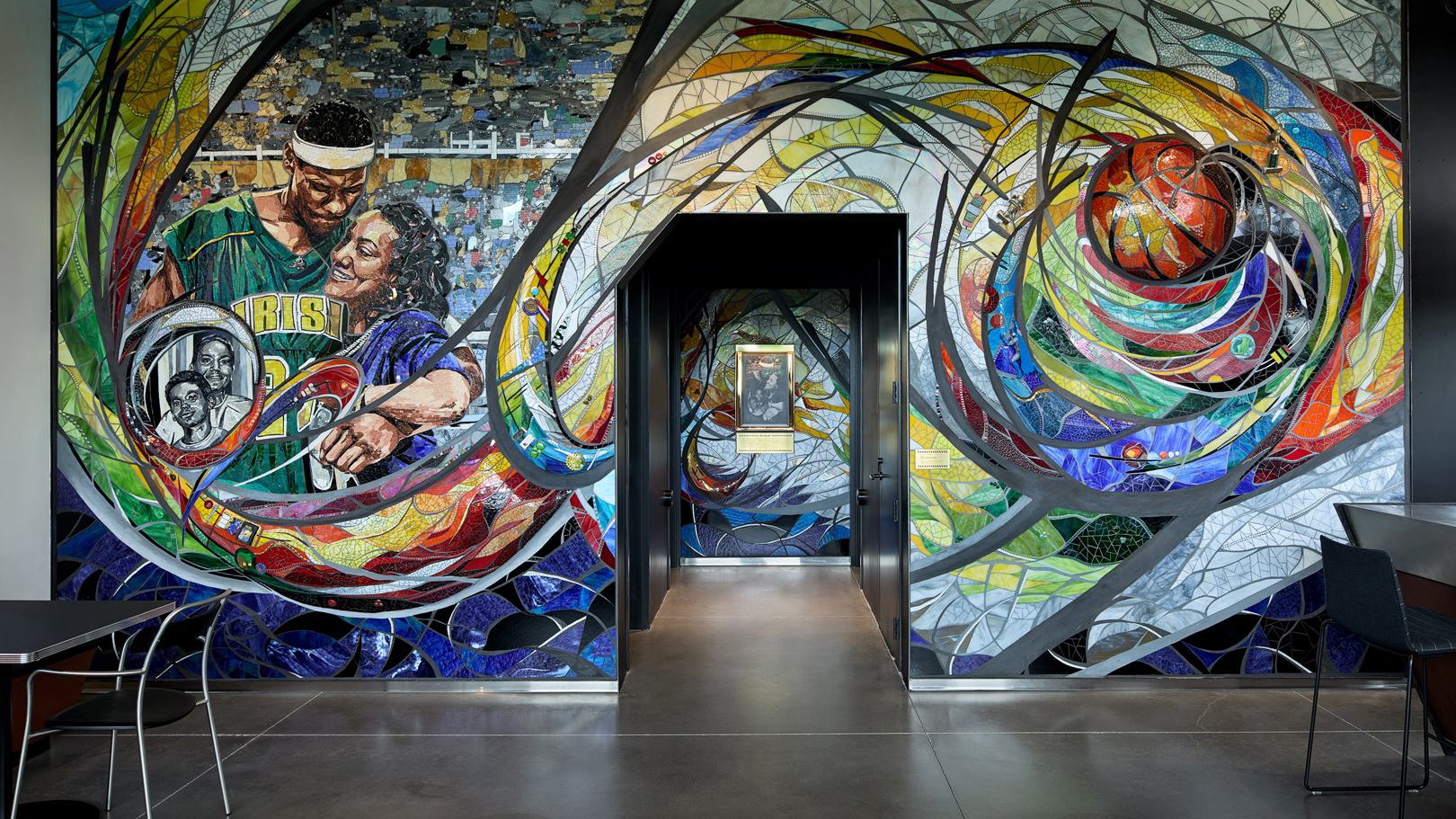
THE SACCHARINE TOUCHES
This is the LeBron James Innovation Center, and that’s more than just a sign in front of the building. Architects infused LeBron’s personal brand and history into all sorts of touches across the space, large and small.
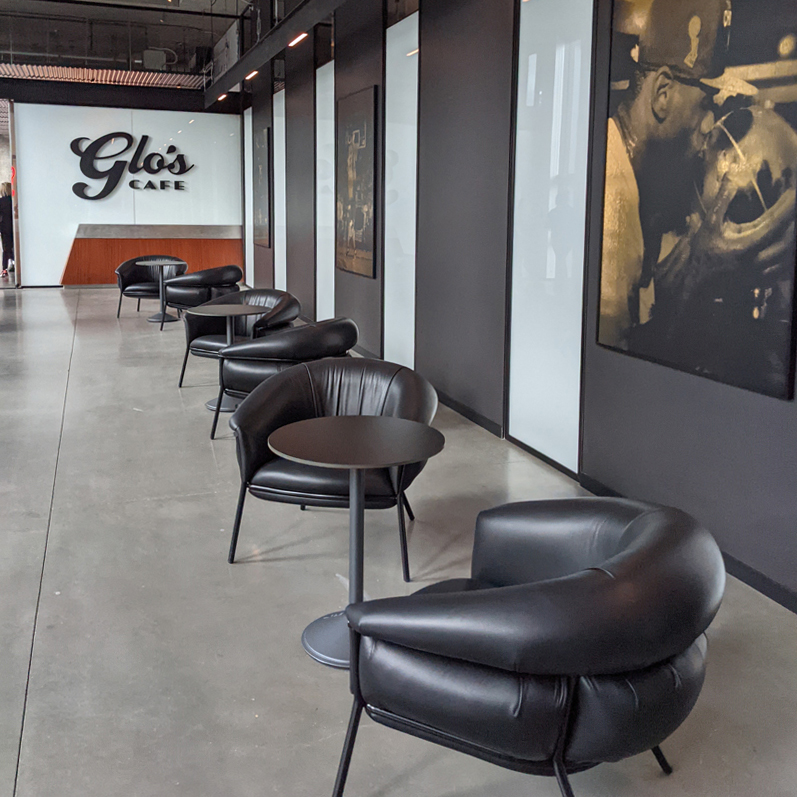
At the base of the aforementioned ramp lives a sign; look closely at the fins on the right, and you’ll read the the names of James’s immediate family. The handles of the front door are his LJ crown logo. And most notably, the cafeteria on the ground floor is named Glo’s Cafe, after his mother. A large mosaic inside the cafe captures a high school-age LeBron hugging her. It’s the most sincere piece of interior design I’ve seen on a corporate campus—so sweet it’ll make your teeth hurt.
…
This article first appeared in www.fastcompany.com
Seeking to build and grow your brand using the force of consumer insight, strategic foresight, creative disruption and technology prowess? Talk to us at +971 50 6254340 or mail: engage@groupisd.com or visit www.groupisd.com/story

